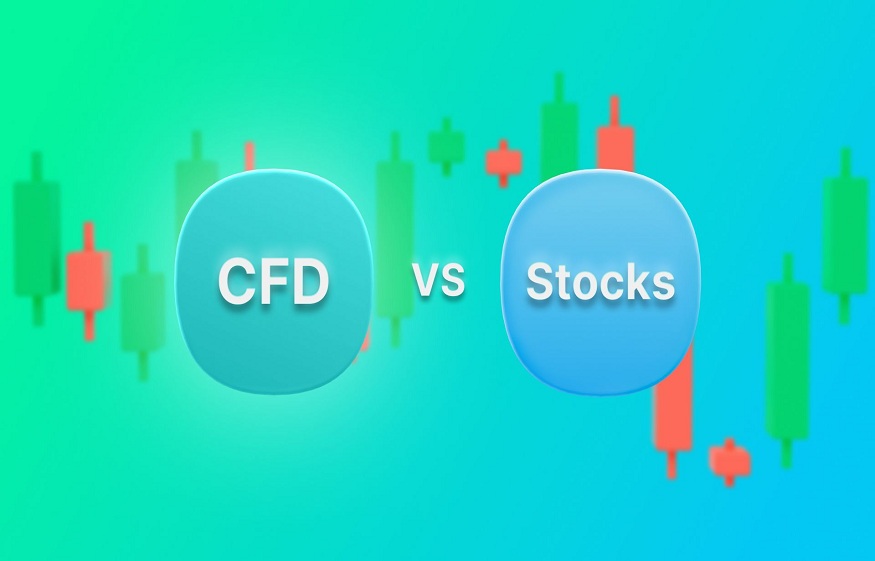CFD trading is a popular investment choice for many Australians. However, investors should know a few CFD assets and types before starting. In this article, we’ll look at some of the most common CFD assets and types traded in Australia and discuss the benefits and risks associated with each. By understanding the different options available, you can make more informed decisions about your trading portfolio. So, let’s get started.
What are CFDs?
A CFD (Contract for Difference) is an agreement between two parties, typically a broker and investor, to exchange the difference between an asset’s opening and closing prices. CFDs are traded on margin, meaning that you only need to put up a small percentage of the total value of your trade. It allows investors to leverage their capital and increase their potential advantages – and losses – from trading.
Different types of CFDs
Index CFDs allow traders to speculate on the overall performance of an entire stock exchange or indexes such as Australia’s ASX 200 or the Dow Jones Industrial Average in America. Unlike traditional stocks, Index CFDs do not require individual stock selection, allowing for greater diversification at a lower cost than buying multiple single stocks.
Another popular type of CFD is currency trading or forex trading. It involves exchanging one currency for another and taking advantage of price movements in the foreign exchange market. Forex traders can leverage their capital to increase their opportunities and losses, as with all CFDs.
Share CFDs are a type of CFD that allow investors to buy and sell individual stocks without having to own the underlying asset. Share CFD trades are settled in cash, meaning that no physical shares changed hands between the buyer and seller. It allows traders to take advantage of short-term price fluctuations in specific stocks at a lower cost than buying traditional shareholding.
Benefits of trading CFDs
CFDs offer investors many advantages compared to traditional shares and other investments. One of the primary benefits is that CFD trades can be opened and closed quickly, allowing traders to enter or exit a position in response to market movements. It makes CFDs an excellent tool for hedging against downturns in the stock market or taking advantage of short-term price movements in individual stocks.
CFDs also offer greater leverage than traditional shareholdings, meaning that investors can make more significant trades – or losses – with smaller amounts of capital. Leverage is typically available up to 1:1,000 for certain CFDs, so investors must understand the risks associated with trading on margin before getting started.
Finally, CFDs are typically more cost-effective than buying traditional shareholdings. It is because CFD trades involve only a tiny margin payment, whereas share traders must pay brokerage fees in addition to the total value of their trade.
Risks associated with CFD trading
It’s important to note that CFD trading is high-risk, and investors may lose more than their original investment. While leverage can increase your trading position, it also increases losses and can lead to significant losses if the market moves against your position.
It’s, therefore, essential for investors to practice risk management when trading CFDs. It involves setting stop-loss orders and taking other steps, such as diversifying your portfolio or limiting the amount of capital you are willing to risk on any single trade.
Another risk to consider is that of market volatility. As with any investment, the prices of CFDs can rush without warning, making it essential to stay on top of the markets and be prepared for sudden changes in direction.
Tips for trading CFDs
Given the risks associated with trading, taking a disciplined approach to your CFD trading is essential. Here are a few tips that can help you stay on top of the markets:
The first step is ensuring you understand the basics of CFD trading and the associated risks. It includes understanding leverage and margin, and CFDs in Australia-specific regulations that apply to your trades. It’s also important to know essential risk management techniques, such as setting stop-loss orders.
Next, it’s essential to develop a trading strategy that works for you and stick to it once the markets open. While it can be tempting to over-leverage your capital or take significant risks in pursuit of quick gains, this often leads to more significant losses in the long run.
Finally, keep track of all your trades and review them regularly so you can spot any mistakes or opportunities for improvement. Doing this will help you become a more successful CFD trader and increase your chances of doing well.
Conclusion
CFD trading is an exciting way to take advantage of the markets. Still, it is crucial to know the risks associated with trading CFDs in Australia before getting started. By understanding the potential rewards and inherent risks of CFD trading, investors can better manage their positions and increase their potential to do well. With the right strategies and tactics, CFDs can be a great way to diversify your portfolio or increase your exposure to the markets. Ultimately, CFDs in Australia provide traders with an efficient and cost-effective way to participate in the markets without committing large amounts of capital upfront.

